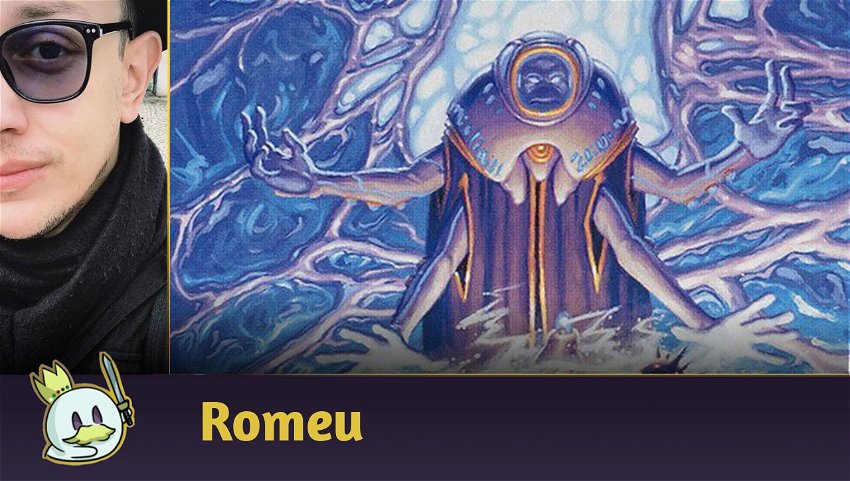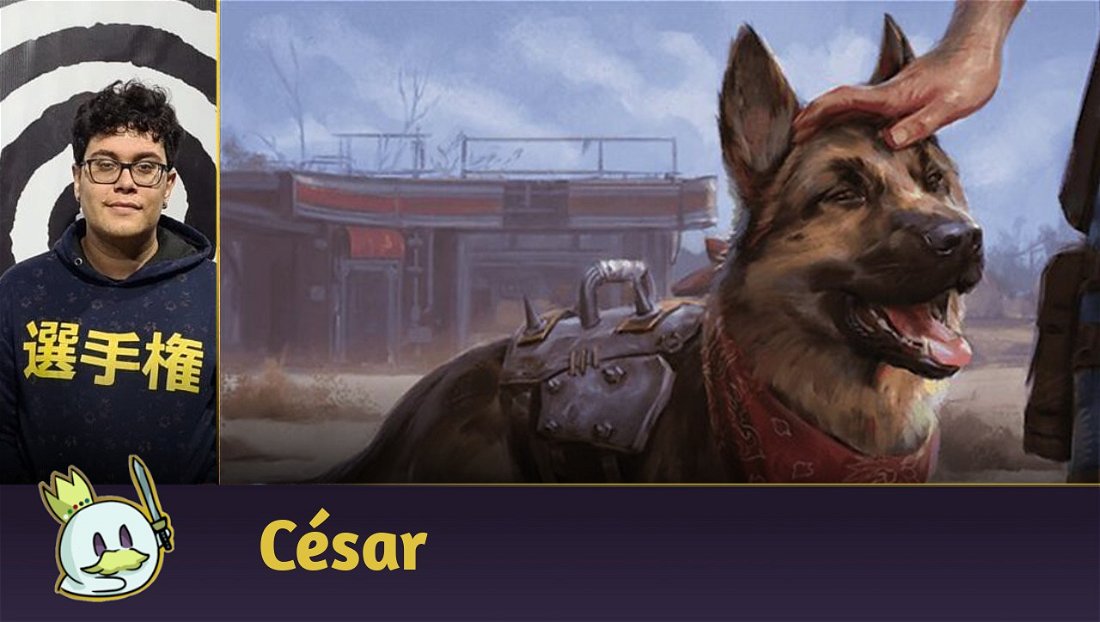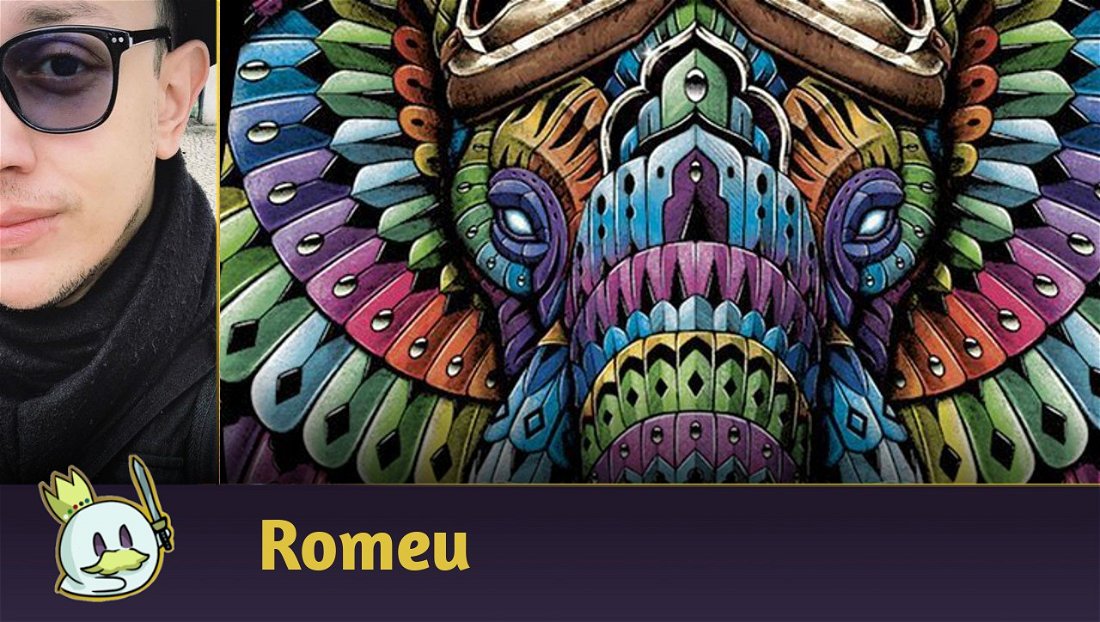With the absence of direct intervention in the latest banned and restricted update, Pauper remains a stable Metagame format, but where some strategies stand out much more than others.
Speed is the keyword of the format. Your deck needs to be ready to counter the aggression of the main archetypes, while also not playing so far back that slower strategies extract too much value each turn, forcing difficult balancing and decision-making regarding your list's concessions.
Whether you are someone who already knows Pauper and has been playing it for many years, or a beginner wanting to know the main decks and proposals that the format has to offer, we have prepared this Tier List guide for Pauper's Metagame in 2024.
It is worth noting, however, that Modern Horizons 3 is scheduled for release in the second quarter of the year, and if it follows the traditions of its predecessors, its additions could cause a giant imbalance in the power creep.
Tier 0.7
Pauper has a strange structure in relation to its two best strategies - Affinity and Kuldotha Red: the other archetypes in the scenario prepare strongly to face these archetypes and have a chance in Leagues, Challenges and other competitive tournaments - however, they remain the best decks in the format.
As a result, both are placed on a scale known as Tier 0. It is common to use this nomenclature to define broken decks, but I prefer to use it as a sign that there is a level of danger in its presence for the Metagame - and to qualify this level, we can divide them into decimal places.
The closer the deck is to zero, the greater the danger that that archetype presents to the format's health and the greater the possibility of it suffering a ban. Any deck on the Tier 0 scale can grow or shrink in decimal places as it receives new additions and/or the format gains new answers.
For reference, these are the Tier 0 scales of some of the banned decks in Pauper's history:
Today, both Affinity and Kuldotha Red are at “Tier 0.7”. They are the best decks in the format, they demand that the Metagame adapts strongly against them and, at times, they seem unfair to play against, but they don't become unbeatable to the point of pulling very alarming winrates and representation, in addition to functioning as a “fun police” against various strategies that would dominate the Metagame in their absence.
Azorius / Jeskai Affinity
The most popular versions of Affinity today are in the 


The great attraction and difference of this version compared to Grixis, and which puts them in the position of the best deck in the format, was the launch of All That Glitters, which gave Affinity the potential for a “combo-kill” early while allowing to press the “free-win” button at any time if the opponent doesn' respect the enchantment every turn.
Added to the high amount of card advantage, straightforward game plan and flexible Sideboard, there are no signs that Affinity will stop occupying the top of the format anytime soon, becoming a solid choice for any Metagame, even those where it is very targeted.
Kuldotha Red
Kuldotha Red is an aggressive deck based on the interaction of Kuldotha Rebirth with artifacts who generate value, such as Implement of Combustion and Experimental Synthesizer to maintain a constant flow of threats without running out of gas. It is the main speed meter and limiter of the format today.

Its strategy works like a Red Deck Wins, seeking to put several creatures into play to pressure the opponent, with the potential for surprise attacks of ten or more damage with Goblin Bushwhacker, the tokens created by Kuldotha Rebirth and any other creature on the list.
Kuldotha Red punishes any archetype who takes too long to establish its game plan and/or delays it for any reason. Even a tapped land on an inopportune turn can snowball and put the opponent in a vulnerable situation where they are in Lightning Bolt or Galvanic Blast's reach.
Due to its game plan, this archetype is Pauper's most played in Leagues and also in Challenges by players not used to the format, and establishes itself as the main archetype with which we need to prepare for, as it rewards its owner with quick games, making it very attractive.
Tier 1
Decks in Tier 1 are the most played archetypes in the format and with the greatest representation and results in Challenges and other major events. They normally dictate the rules that other competitors need to adapt to have a chance of making a Top 8 or winning a tournament.
Dimir Terror
Dimir Terror is the natural evolution of Dimir Delver, being more oriented towards the Control spectrum, while it can sometimes establish Tempo plays and win the game quickly with Tolarian Terror or Gurmag Angler.

It holds some of the best spells in its color combination, including free spells like Snuff Out and ways to filter the top and speed up the casting of your threats with Thought Scour and Mental Note, in addition to now having an easier time finding the right lands with fewer dead card slots thanks to Lorién Revealed.
Added to the combination of efficient removals, counterspells and flexible slots that allow you to use meta calls such as Unexpected Fangs or Agony Warp, Dimir Terror presents itself as the ideal choice for players who like to make several decisions in the game and be rewarded with them.
Golgari Gardens
Golgari Gardens is the natural evolution of Midrange in Pauper, being a direct branch of Mono Black Control, with more card advantage and flexibility mechanisms received through the splash for green.

Its shell consists of efficient removals added to the best value sources in the format today, focused on the interaction between artifacts and cards such as Deadly Dispute along with Ichor Wellspring.
As it deals with the opponent's threats and advances its game plan, Gardens resorts to the Initiative and Monarch mechanics, considered parasitic in 1v1 formats, to accumulate advantages until reaching the point of inevitability.
This mix and the flexibility the Sideboard in its color combination provides, with cards like Deglamer and Drown in Sorrow make Golgari Gardens the main choice for players who want to prey on very aggressive decks on Pauper.
Tier 1.5
Decks at Tier 1.5 are viable options in the competitive environment and produce results in tournaments and Leagues. They don't precisely dictate format trends, but tend to function as a direct response to them, or are consistent in staying in the format despite no longer being at the top of the Metagame.
Dimir Faeries
Dimir Faeries is the current most famous and efficient variant of combining Spellstutter Sprite with Ninja of the Deep Hours, a proposal as old as the format.

Despite the most recent additions, such as Lorién Revealed and Cast Down, its proposal remains the same as when it was conceived in Pauper during the pandemic: using the already known Faeries shell with spells like Snuff Out and value engines such as Thorn of the Black Rose and Okiba-Gang Shinobi.
Another advantage of this version is the increase in clock rate with Gurmag Angler, which avoids the opponent's Snuff Out and survives against Galvanic Blast, making it easy to protect with Spellstutter Sprite in an environment where most spells cost one or two mana.
Boros Synthesizer
Boros Synthesizer is another natural evolution of a well-established archetype in Pauper for over a decade.
Where before it needed to rely on the interaction of Ichor Wellspring and Kuldotha Rebirth and, later, the use of Palace Sentinels to maintain card advantage, today it has a lower mana curve and is much more aggressive, thanks to Experimental Synthesizer.

Featuring the famous combination of artifact bounces through Kor Skyfisher and Glint Hawk, this deck abuses the ETB and LTB effect of Experimental Synthesizer to generate plenty of value, while taking advantage of Lembas and Barbed Batterfist as other potential targets.
Complemented with Lightning Bolt, Galvanic Blast and Seeker of the Way, Boros Synthesizer can create very explosive openings while also enabling more reactive stances, extracting value from each play while exhausting the opponent's resources.
Caw-Gates
Caw-Gates is a Control deck focused on the interaction between Basilisk Gate with evasive creatures, making it possible to win the game in a few turns after stabilizing the battlefield.

Its name is based on Caw-Blade, a famous Standard deck from 2011, where Squadron Hawk teamed up with Stoneforge Mystic, Sword of Feast and Famine and Jace, the Mind Sculptor to create one of the most powerful archetypes in the history, to the point of leading to the first ban on Standard after more than seven years without direct interventions.
In Pauper's version, Squadron Hawk teams up with Basilisk Gate and Brainstorm to reproduce similar results, where we seek not to miss land drops to increase the land's damage potential while controlling the game with removals and Counterspell.
Other creatures, such as Guardian of the Guildpact and Sacred Cat complement this game plan and make this one of the most famous archetypes among Control players.
Grixis Affinity
Affinity's 

Grixis Affinity tries to do a little bit of everything: it features efficient removal, fast and powerful threats, diverse draw effects and even powerful interactions with Kenku Artificer and Makeshift Munitions, making it challenging to pilot, but also difficult to overcome once its plan starts to stabilize.
Its weakness, however, lies in this same greed of trying to do a little of everything. With three colors and a much slower speed than the 
Tier 2
Tier 2 decks appear on the competitive scene, produce results, but are unlikely to be found in the Top 8 of major events. They are viable options for local events and, in some cases, they are emerging strategies in the format.
Familiars
Familiars is a Control in the 

With Ghostly Flicker and Archaeomancer, Familiars can blink any other permanent as long as they have the mana to do so, either to protect it from removal or take advantage of its ETB effect. Two Archaeomancers allow the deck to reuse any spell from its graveyard, creating “pseudo-lock” situations in which the opponent is unable to progress in the game.
Its weakness, however, lies in the number of clicks and plays required to maximize its use in Magic Online, while it is also a tiring archetype to play in in-person events, commonly leading games to time-out.
Jeskai Ephemerate
Following a similar logic to Familiars, but without the combo micro-interactions, Jeskai Ephemerate is the traditional version of Control that every Magic player must have come across at some point: counterspells, removals, card advantage and efficient winconditions make up this list.

Just like Grixis Affinity, Jeskai Ephemerate takes advantage of its core to attack from different angles: by exhausting the opponent's resources and accelerating its mana with the interaction between Cleansing Wildfire and Modern Horizons II's Bridges, the deck can win the game with Murmuring Mystic tokens, or turning a land into a threat with Kenku Artificer, or even with the classic beatdown plan through Mulldrifter.
Unfortunately, its flexibility is also its weakness: Jeskai Ephemerate is sometimes too slow to counter the aggression of other faster strategies, and it takes a lot of time to take over the game.
Bogles
Another of the most classic archetypes, Bogles is the classic voltron, focused on the difficulty of dealing with their threats and the ability to enchant them into powerful threats.

Like Azorius Affinity, Bogles is more focused on executing its game plan rather than interacting with the opponent. After all, any combination of Rancor, Armadillo Cloak, Ethereal Armor or Ancestral Mask means that the enchanted creature can win the game on its own.
While it is a good Meta Call against the Tier 0 decks, Bogles suffers greatly with the inclusion of Tithing Blade in Golgari Gardens and Dimir Terror's sacrifice effects, such as Chainer's Edict, in addition to suffering collateral damage due to the sweepers present to deal with Kuldotha Red.
Gruul Ponza
Ponza is a big mana archetype aimed at interacting with your opponent's lands, to delay their game plan while advancing yours until you have enough mana to cast Boarding Party or Annoyed Altisaur.

The deck relies on the interaction between Arbor Elf and Forests enchanted by Wild Growth or Utopia Sprawl to generate a lot of mana in a single turn, managing to cast Mwonvuli Acid-Moss as early as well as in the second turn in a perfect combination, being accompanied by Boarding Party in the following turn.
Because it is a strategy around delaying the opponent by interacting with their lands, Gruul Ponza has problems with fast archetypes capable of stabilizing with little mana, and has a notable absence of cards designed to deal with a full board in Game 1, in addition to requiring very aggressive mulligans if you draw the wrong half of the list.
Tier 3
Tier 3 covers decks that produce results in Leagues and appear in the Top 32 of Challenges, but rarely make it into the Top 8. They are viable options for weekly events and local stores, or as a Meta Call for more specific environments.
Mono Blue Delver / Mono Blue Faeries
The Mono Blue Delver, or Mono Blue Terror, is a variant of the Tolarian Terror lists focused on speed at the expense of resilience.
Its strategy resolves around casting a Terror as early as possible and holding your opponent until you win, or using Delver of Secrets to carry the game on its own alongside counterspells, bounces and top filtering.
Following the same logic, we have the Faeries variant, which runs Spellstutter Sprite with Ninja of the Deep Hours to take over the game with small trades while advancing with flying threats every turn.
This version is slower than the Tolarian Terror variant, but less passive against graveyard hate and a little more resilient against the overall Metagame, in addition to better rewarding good decision-making.
Moggwarts
Moggwarts, or “Goblins Combo”, is aimed at the interaction between First Day of Class with Putrid Goblin, where we can sacrifice it to another card and, when it comes back, the +1 /+1 counter First Day of Class provides will nullify the -1/-1 counter from the Persist trigger.
This interaction is abused with Skirk Prospector for infinite mana and Dark-Dweller Oracle to exile the top to find Makeshift Munitions for infinite damage, and is complemented by a dozen protection and redundancy.
Tron
Tron lists are currently divided into two categories: Control and Combo.
The control version is the classic variant, aiming to use Ghostly Flicker and Ephemerate along with several ETB effects to extract value, using the extra mana from Urza's lands to cast several spells in one turn, holding the game until finishing it with Rolling Thunder.
The combo variant revolves around the interaction between Myr Retriever, Golem Foundry and Ashnod's Altar to create infinite Golem tokens, or to generate a gigantic Storm counter for Weather the Storm, making it possible to extend the game as much as necessary.
Walls
Walls is a combo based on creatures with the defender ability, aiming to take advantage of Overgrown Battlement and Axebane Guardian to generate absurd amounts of mana, or even reach infinite with Freed from the Real, which can be picked up with Drift of Phantasms to complete the combo with Valakut Invoker.
Conclusion
That's all for today!
If you have any questions or suggestions, feel free to leave a comment!
Thanks for reading!















— تعليقات 0
, ردود الفعل 1
كن أول من يعلق